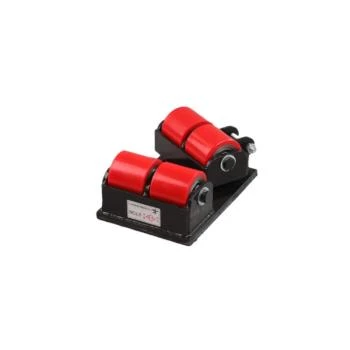machine moving & rigging
The Art and Science of Machine Moving and Rigging
Machine moving and rigging is a critical facet of modern industry that involves the safe and efficient relocation of heavy machinery and equipment. From manufacturing plants to construction sites, this specialized field combines technical expertise, safety protocol adherence, and an understanding of various mechanical principles to ensure that heavy loads are moved with precision and care.
Understanding the Basics of Rigging
At its core, rigging refers to the process of using various equipment and tools to lift, move, and position heavy loads. This can include cranes, hoists, pulleys, and a variety of lifting devices designed to securely attach to the load. The choice of rigging equipment depends on the nature and weight of the items being moved, as well as the specific site conditions. Commonly used materials in rigging include slings made from synthetic fibers, wire ropes, and chains, each possessing distinct properties suited for different applications.
Safety First The Importance of Compliance
One of the paramount components of machine moving and rigging is safety. The risks involved in moving heavy machines are significant, not only to the equipment but also to personnel and the surrounding environment. Compliance with local and national safety regulations is essential. Rigging professionals must have a thorough understanding of load limits, proper signaling techniques, and emergency procedures. Regular inspections of rigging equipment ensure that all tools used are in optimal condition and reduce the likelihood of accidents.
The Planning Process
Successful machine moving begins with meticulous planning. Before any lift is attempted, rigging professionals conduct a thorough assessment of the load, including its weight, dimensions, and center of gravity. Additionally, the route that the load will take during the move is evaluated for obstacles, overhead power lines, and terrain concerns. This detailed planning process helps anticipate potential challenges and devise solutions before they arise.
machine moving & rigging

Technological Advancements in Rigging
Recent technological advancements have revolutionized the rigging industry, enhancing both safety and efficiency. The use of computer software for load calculations, 3D modeling, and simulation software allows engineers to visualize the rigging process before physical work begins. Drones and other remote monitoring devices are increasingly used to survey and navigate job sites, providing real-time data to riggers as they work.
Skilled Labor The Backbone of Rigging
Machine moving and rigging is a profession that requires a high level of skill and training. Rigging professionals often undergo extensive training programs that cover not only technical skills but also safety practices and regulations. Many organizations offer certification programs, ensuring that riggers maintain a recognized standard of competence and can perform tasks effectively under pressure.
Case Studies Successful Machine Moves
Throughout history, there have been numerous examples of successful machine moving and rigging projects that highlight the importance of careful planning and execution. For instance, relocating a massive generator from one power station to another may require a combination of cranes, trucks, and trained personnel working in harmony. Such projects emphasize the importance of teamwork, communication, and the careful coordination of multiple parties to ensure a smooth operation.
Conclusion
Machine moving and rigging is an intricate process that plays a vital role in the functionality of various industries. The combination of engineering principles, safety considerations, and skilled labor ensures that heavy equipment can be moved and installed without incident. As industries continue to evolve and modern technology offers new solutions, the field of rigging will remain essential, adapting to meet the demands of the future while prioritizing safety and efficiency every step of the way. To thrive in this complex environment, investment in both training and technology is crucial, ensuring that professionals in the industry can meet the challenges head-on and maintain the high standards expected in machine moving and rigging operations.
-
Portable 2000 lb Gantry Crane | Heavy-Duty & AdjustableNewsAug.30,2025
-
Versatile Lifting Solutions with Gantry and Overhead CranesNewsAug.29,2025
-
The Versatile Mobile Gantry Crane SolutionNewsAug.29,2025
-
Reliable Movement with Heavy Machinery Skates and RollersNewsAug.29,2025
-
Reliable Lifting Performance with 2000 lb Gantry Crane and 2 Ton Overhead SystemsNewsAug.29,2025
-
Maximize Lifting Efficiency with PML Magnetic LiftersNewsAug.29,2025
-
Efficient Relocation Starts with Reliable Machinery MoversNewsAug.29,2025
